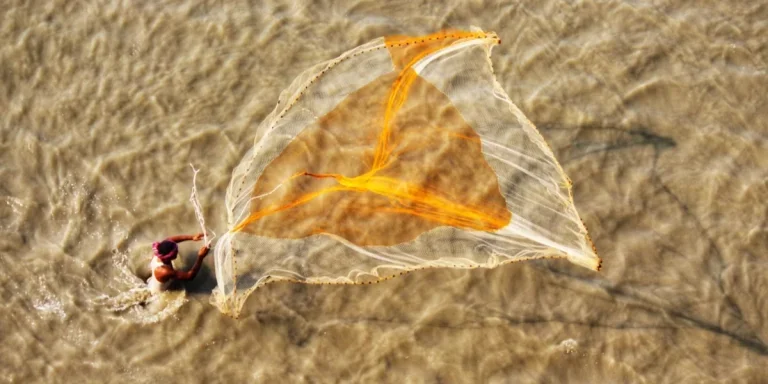There’s a lot of thought that goes into choosing the right knotless net for fishing. Using the wrong fishing net can severely impact the health of the catch, so it’s important to pick the best option. Knotless nets are a popular alternative to traditional fishing nets which are known for their smooth texture that helps to reduce the amount of injured fish caught.
Due to their popularity, there are numerous knotless nets now available on the market, each with their own features. Keep reading to discover everything you need to know to choose the best knotless nets for fishing.
Table of Contents
What is a knotless net?
Global market value of fishing nets
Main types of knotless nets
Conclusion
What is a knotless net?
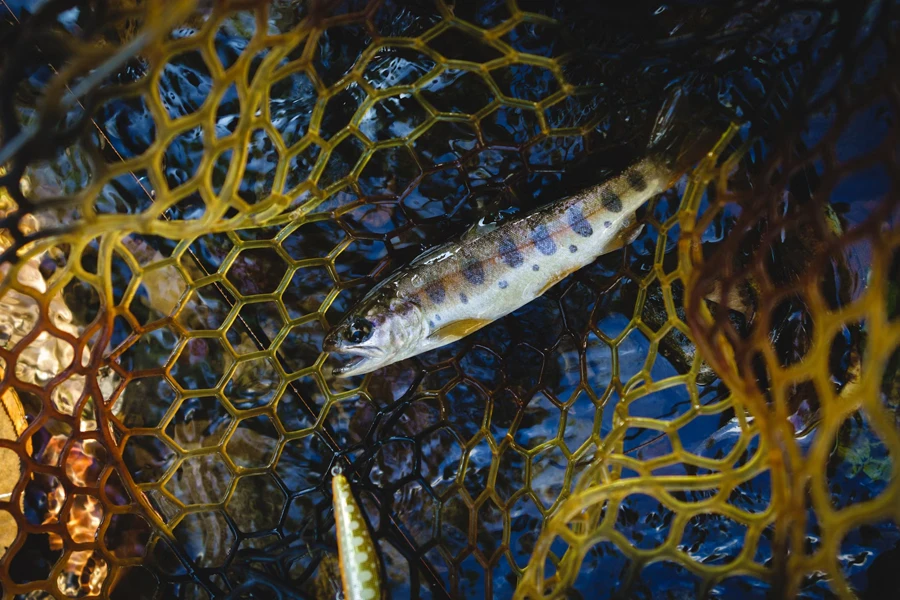
Before choosing which knotless net is the best fit, it’s important to know the difference between a knotless net and a traditional fishing net. Knotless netting is designed without traditional knots which results in a smooth surface. This design makes it ideal for catch-and-release practices since it reduces the overall risk of injuring the fish. This means that tangling is minimized and the net is easier to clean and more durable.
Most knotless fishing nets are made from material such as rubber or nylon so that knots aren’t required to keep the net from unraveling. These nets are known for being a fish-friendly option and are perfect for anglers who want longevity in their fishing tools.
Global market value of fishing nets
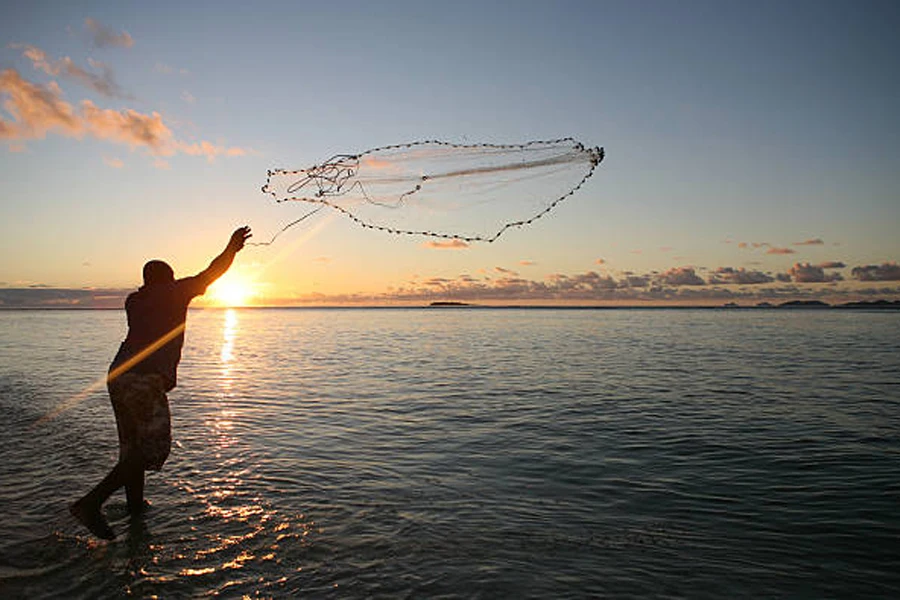
Fishing nets are available in all shapes and sizes, with plenty of different materials out there for people to choose from too. With fishing being both an outdoor hobby and an important job around the world, demand for fishing nets is only increasing. This includes nets such as dip nets, bait bags, and sport nets for fishing.
There’s a growing public awareness of the need for efficient fishing gear, both in fisheries and within the professional fishing industry. This has led the market to develop fishing nets with modern and more sustainable materials that don’t compromise the health of the fish.
In 2023 the global market value for fishing nets reached USD 2.98 billion. It’s projected that the market will grow by a compound annual growth rate (CAGR) of 3.66% between 2023 and 2033. This will bring the total value up to approximately USD 4.27 billion by 2033.
Asia Pacific is expected to have the largest share in the market but North America will have the fastest growth as fishing operations continue to grow organically. The new knotless netting range has already received positive reviews around the world.
Main types of knotless nets
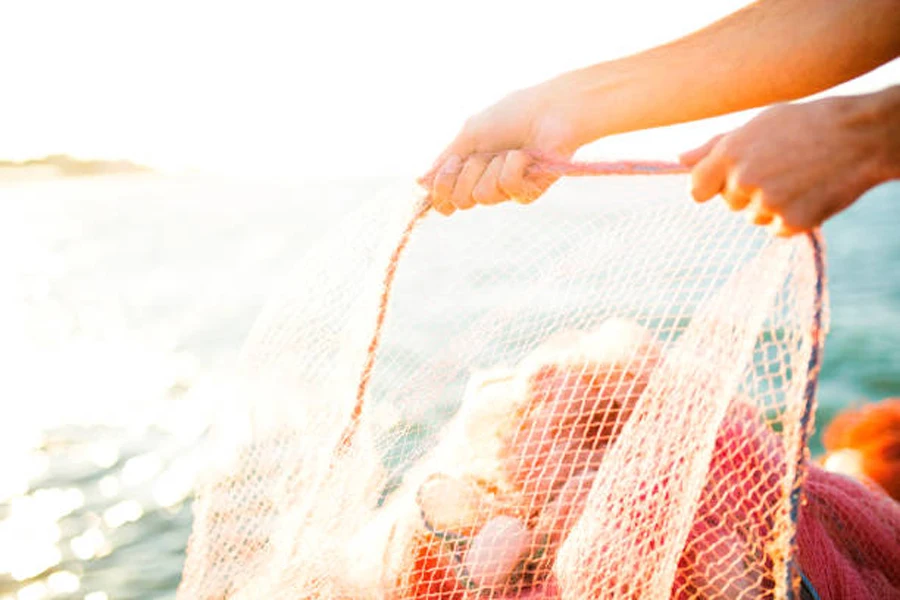
There are a few variations of knotless nets for fishing that buyers can choose between. Each style will serve different fishing needs due to the materials used as well as how the net is designed and the overall strength of the product. Some nets will be more tailored to certain species and fishing environments than others, but ultimately it’s down to product quality and net construction.
According to Google Ads, “knotless net” receives a monthly average of 480 online searches. The most searches come in July when numbers reach 590. The rest of the months receive between 7-8% of annual searches each, apart from January when searches drop to just 320.
Google Ads also reveals that the most searched for types of knotless nets are “rubber fishing net” with 1600 monthly searches followed by “nylon fishing net” with 1300 searches and “PVC coated mesh net” with 390 searches. Keep reading to learn more about the key features of each of these knotless nets.
Rubber fishing net
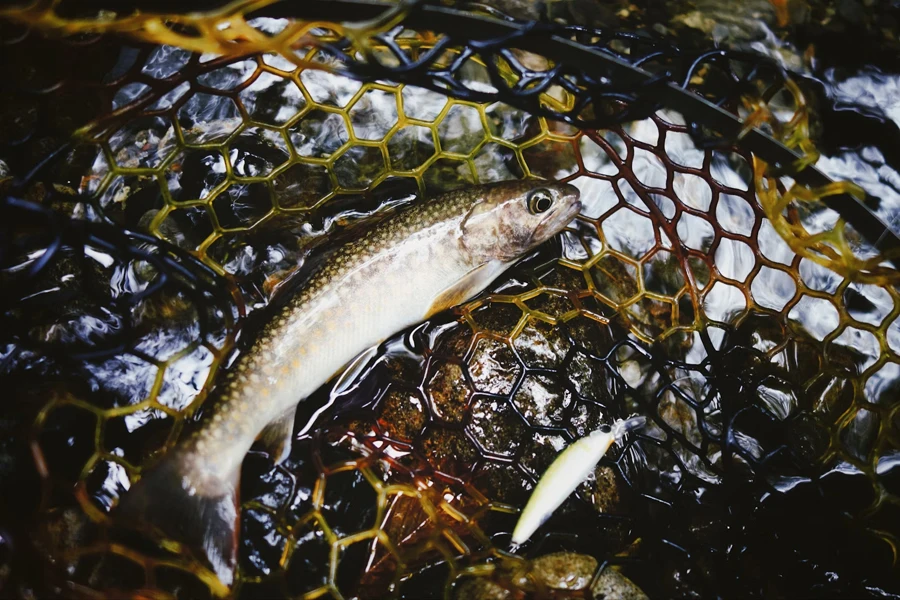
The rubber fishing net is a popular netting option within the fishing industry. Rubber is non-absorbent so it doesn’t absorb moisture, water, or bacteria like traditional fishing nets do. Their smooth design offers fish-friendly options, making them easy to clean and maintain, and there’s no need to worry about them tangling.
Rubber is also known for its durability which is very important in the fishing industry so these fishing nets have a very long lifespan. This makes them a popular choice for catch-and-release fishing where maintaining the health and safety of the fish is vital.
The most common use for rubber fishing nets is by anglers targeting species that need to be handled gently, such as bass or trout. They’re very popular for freshwater fishing since the smooth design of the nets reduces the chance of fishing lures getting caught on them.
Nylon fishing net
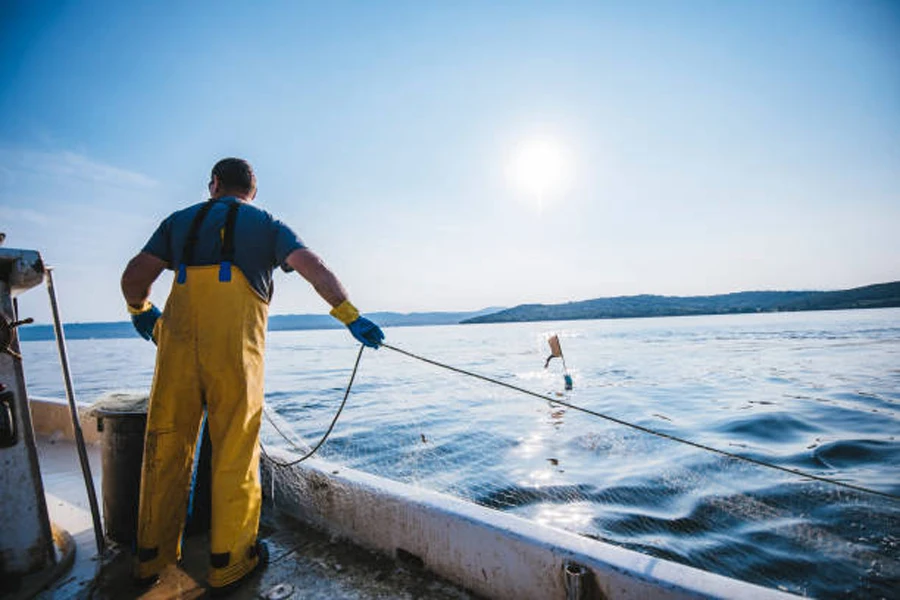
For consumers who are looking for a strong and light-weight knotless net, nylon fishing nets are the perfect option. Nylon is resistant to fraying so nets that are being used consistently will still last for a long time. They’re also very flexible making them easy to use as well as to store. Consumers enjoy using nylon fishing nets due to their mesh structure which is available in various sizes and can cater to different fishing needs.
Nylon fishing nets are known for having a lower price point compared to other types of fishing nets. They can be used in saltwater and freshwater due to their adaptability, and they’re suitable for commercial fishing as well as angling. These nets aren’t designed to be used for gentle handling like rubber nets are but they’re useful for robust fish or when catch-and-release isn’t being practiced.
PVC coated mesh net

Nylon or polyester nets are often covered with PVC to create a smooth and durable surface that’s also gentle for the fish and will limit the chance of an abrasion occurring. PVC coated mesh nets are designed to better resist water absorption and reduce the risk of bacteria building up. This high-quality coating also improves the durability of the nets and minimizes the risk of fish getting injured. This is an important factor with catch-and-release fishing or in aquaculture operations.
Anglers often use PVC coated mesh nets for handling species that are very delicate or valuable and their longevity ensures that they have a fishing tool that will last for an extended period of time without breaking. These knotless fishing nets can be used in both saltwater and freshwater thanks to their resistance to harsh weather conditions. They’re good items to have on hand for different pounds of fish without worrying about damage.
Conclusion
Using a knotless net for fishing is becoming more popular in all types of fishing conditions. New technologies in the fishing industry have ensured that users no longer have to worry about fishing nets becoming tangled or damaging the fish. Knotless nets have a smooth finish and are incredibly durable, making them the perfect piece of fishing equipment to have on hand during any fishing expedition. In the coming years, the market is expecting a much higher demand for these types of fishing nets as opposed to traditional versions.
